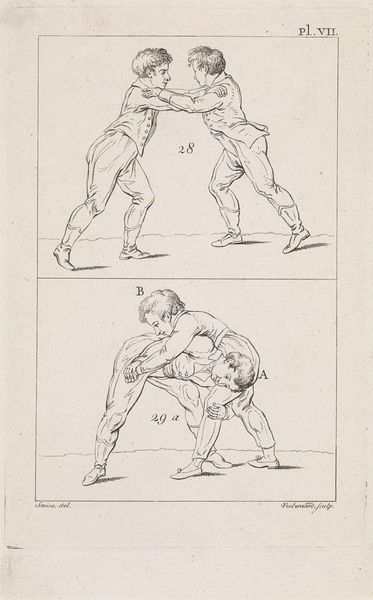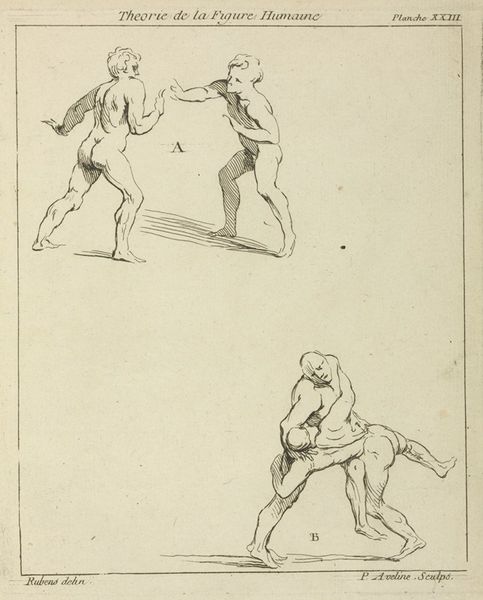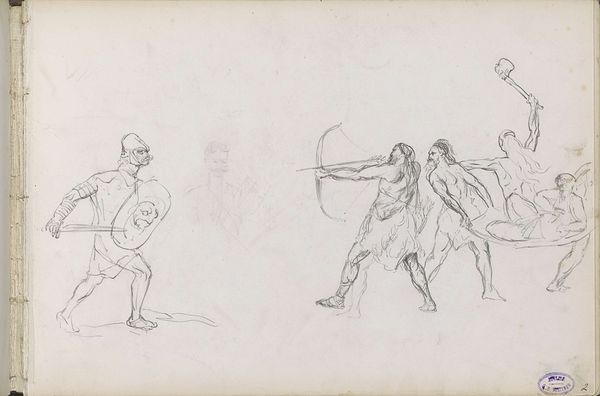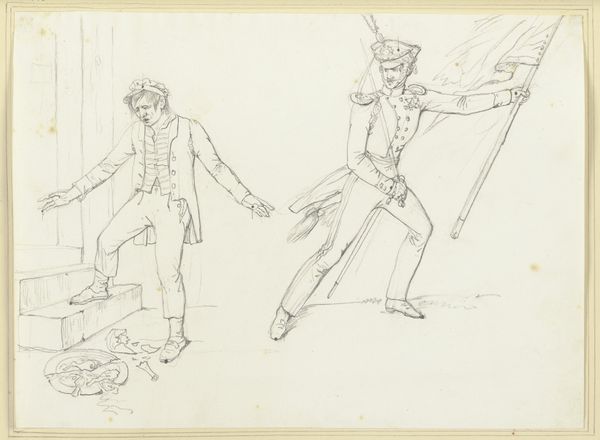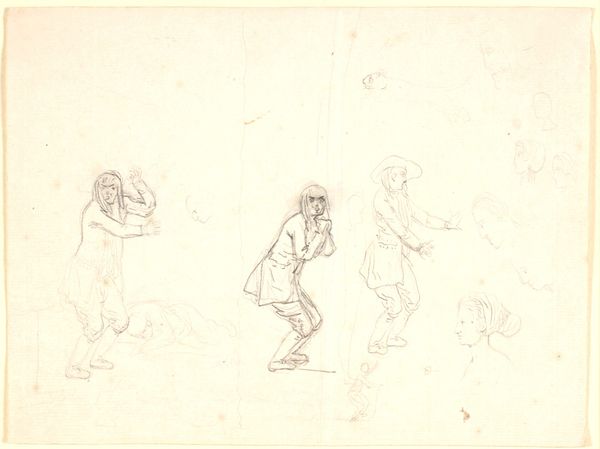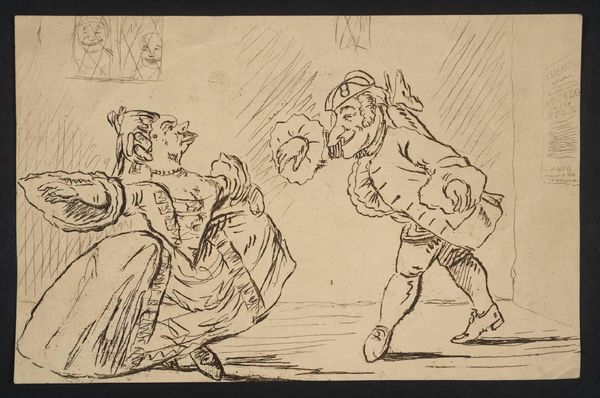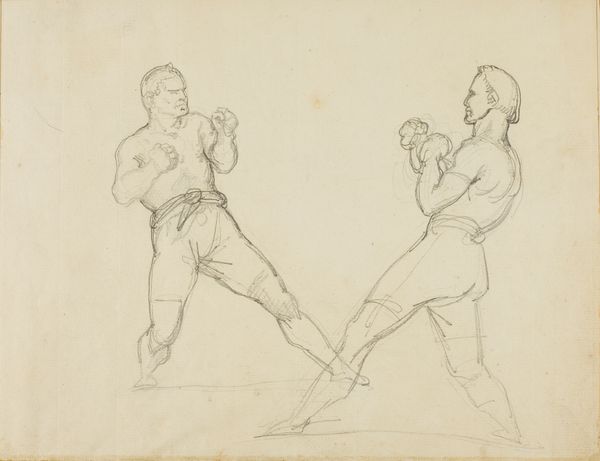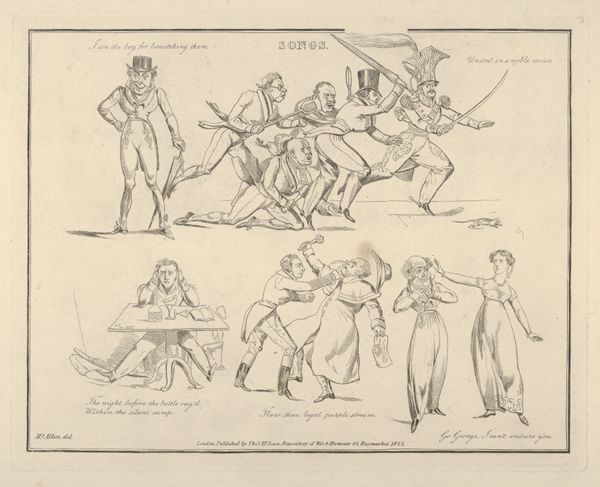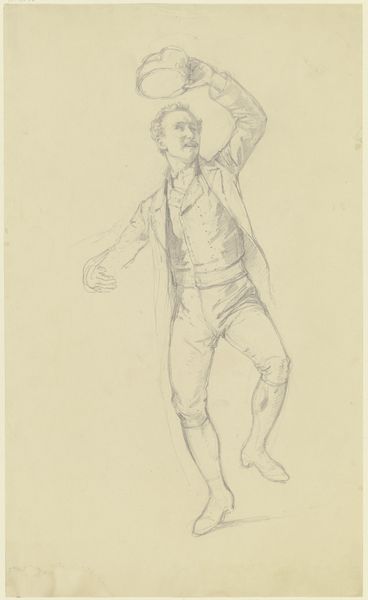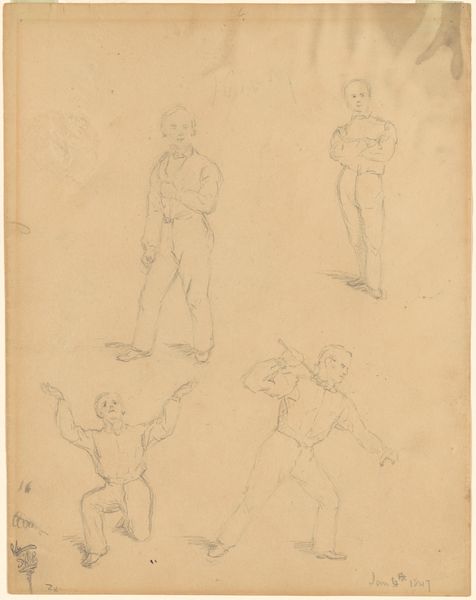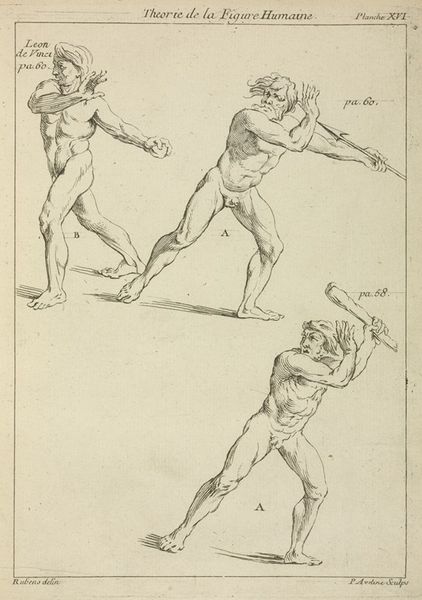
drawing, ink, pencil, pen
#
portrait
#
drawing
#
comic strip sketch
#
imaginative character sketch
#
neoclacissism
#
quirky sketch
#
figuration
#
personal sketchbook
#
ink
#
idea generation sketch
#
sketchwork
#
pencil
#
line
#
sketchbook drawing
#
pen
#
history-painting
#
storyboard and sketchbook work
#
academic-art
#
sketchbook art
#
initial sketch
Dimensions: height 176 mm, width 116 mm
Copyright: Rijks Museum: Open Domain
Curator: I’m struck by the seeming lightness of it, the delicacy of line. Before us is a work entitled "Lichamelijke oefeningen; worstelen B," or "Physical exercises; wrestling B." Dating back to 1806, it’s a drawing by Daniël (I) Veelwaard, currently held at the Rijksmuseum. Editor: Yes, it’s quite sparse. Almost an outline, focusing more on the pose and the relation between bodies than individual forms. It looks like the men are engaging in some kind of folk wrestling perhaps? I am trying to unpack the dynamics. It looks almost choreographic, wouldn't you agree? Curator: Certainly. It resonates within a larger context of viewing the body in art. Neoclassical art prized an understanding of the body. These men almost blend, become two parts of the same idea in two frames on one image, bound within rules both stated and unspoken. We should think too about masculinity in relation to the Napoleonic code and new laws relating to class and status across Europe at the time it was drawn. Editor: Yes, the almost scientific interest in anatomy of classicism comes through in a kind of precise observation but notice the curve of the man’s lower back on the top, juxtaposed with the right angle of the other man’s arm as he reaches to touch the other man’s torso; also the light touch of his dancing shoe… So much can be understood about human movement and relations just through lines. It also is a moment that seems to reference historical painting, especially the battle scenes. Curator: These drawings also prompt us to think about the culture of athleticism emerging during this period and its connections to military ideals and national identity. Veelwaard has depicted these intertwined figures and gives a sense of them both attempting dominance. We have two frameworks set next to one another to compare the bodies in combat; these works allow us a glimpse of their struggles but they become less literal than emblematic of physical achievement. Editor: Precisely! Through an economy of lines and attention to their placement on the page, Veelwaard allows us access to understanding the body and all the social relations it contains. Curator: The layered historical and societal understanding of this image allows us to investigate power, status and social structures inherent within 19th century wrestling. Editor: I concur. Focusing in this way has helped me appreciate how Veelwaard used just pen, pencil, and ink to achieve so much.
Comments
No comments
Be the first to comment and join the conversation on the ultimate creative platform.
